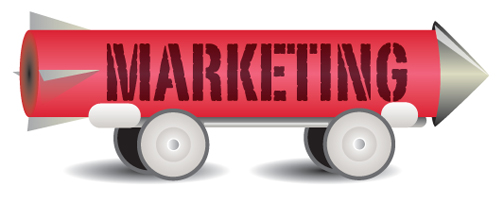 How much time does it take for marketing to work? That is a
common question I get from our customers. There is not one answer to that
question. It depends upon what you are selling and the felt need for it
presently.
How much time does it take for marketing to work? That is a
common question I get from our customers. There is not one answer to that
question. It depends upon what you are selling and the felt need for it
presently.
When there is an urgency in the felt need, the marketing
time is significantly shorter than when there is time to wait on a decision to
buy or not. I went out to eat today for lunch. I examined my options based on
restaurants in my vicinity, how long I had to wait to get my food, what was on their
menu before I made a decision. I get hungry everyday at lunchtime, so I have a
recurring felt need. It doesn’t take a lot of time or contemplation for me to
make a decision. If I hear or see an ad for something that sounds good around
lunchtime, I will go buy it. Other products and services don’t have the same
felt need. For instance, if I were buying gutters for my house, I would take my
time and do more research than I do with restaurants. That is, unless the
gutters had just fallen off of my house and it was about to rain. In that case,
my decision would come much quicker. Why? The felt need is urgent.
Can you build urgency into your marketing? Yes you can. When
you create a limited time sale, you are setting a deadline to force a felt need
for a bargain upon your customers. Does it work? Yes! Limited time discounts
are great marketing techniques to shorten the sales cycle and make your
marketing work faster.
Similar to urgency, another driver to shorten the time it
takes marketing to work is scarcity. Whenever anything is in short supply, the
felt need to buy it – and even horde it – goes up. Right now there are critical
shortages of foods that are sold in glass jars because canning jars are in
short supply. So are hot dogs, chlorine used to sanitize swimming pools from
bacteria, new and used cars, lumber and a number of other building materials.
(I was recently told that stealing lumber at construction sites has become a
problem for homebuilders.) Shortages create panicked buying.
If you have an item that is in short supply, use your
marketing to get the word out. There is something about the way our consumer
brains work that make us want to buy something before they are all gone.
Counting down to the last of your inventory is a great way to do this.
Can you ethically build scarcity into your marketing if the
item isn’t really in short supply? No. It doesn’t mean that it has never been
done, but there is a problem when products are artificially held back to create
a perceived insufficient supply to drive consumers into a frenzy. That sort of
thing usually is found out and when it is, there is a price to pay for deceiving
your customers.
If you want to shorten your marketing cycle, you need to
understand the felt need of your customers. Do they have to buy it now to meet
that need? If not, is there something you can do to create urgency or
communicate scarcity that would trigger their response? The greater the felt
need, the quicker marketing works.
_____________________
17 Everyday Products
Now Facing Shortages by Chris Kissell, Money
Talks News, May 6, 2021